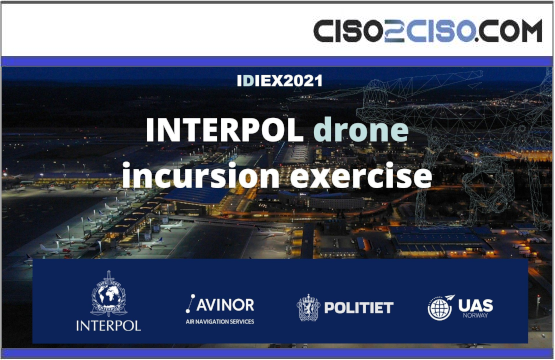Unmanned aircraft systems (UAS), more commonly known as “drones,” are automated airborne vehicles sometimes described as flying robots or flying cell phones or computers. Drones have quickly proven to be potent tools across all sectors and industries – automating and improving our ability to conduct everyday work in various environments. They have, however, also proven to be incredibly threatening. In the wrong hands, these machines could turn into weapons or mediums to enable criminals to conduct unlawful activities.
In recent years, the threat of drones entering restricted airspaces has become a cause for concern and a policing challenge in many of the 195 INTERPOL member countries. This threat is aggravated when a drone enters the airspace in and around an airport zone. It can cause an interruption in airport activity, the diversion of flights, and other potential incidents. Aerodrome menaces could result in financial losses to airport owners, airlines, and travellers using the airport due to delays and diverted aircraft, and create safety risks. In this context, counter-drone systems, also called counter-UAS systems (or C-UAS systems), are essential in ensuring the security of airports, and commercial providers have already developed a wide range of solutions to address this challenge. C-UAS systems will likely become even more prominent as authorities in member countries create regulations around drones and managed airspace. Despite this growth in importance, there is still insufficient information on assessing C-UAS systems in real-life conditions.
To better understand C-UAS systems, INTERPOL IC, in close collaboration with the Norwegian Police, carried out a three-day exercise at the Oslo Gardermoen Airport in Norway in September 2021. Participants came from law enforcement, academia, and industry from across the world. It was the first time that an exercise was able to test and assess a wide range of C-UAS systems whilst at the same time, the airport remained operational, accepting flights taking off and landing as scheduled with no interruptions to the airport.




















































